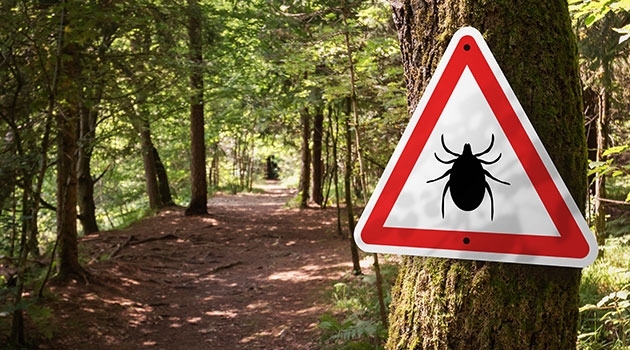Climate change influences infection via ticks and mosquitoes

The researchers will investigate the effects of climate change on the presence of ticks and the viruses and bacteria they can spread, both in the ticks themselves and in relation to infections. Photo: Getty Images
Infections spread via mosquitoes and ticks are becoming increasingly common. Tove Hoffman, Researcher in Infectious Medicine at the Zoonosis Science Centre (ZSC), Uppsala University, will study how climate change affects the spread of infection, especially in more northerly countries.
Hoffman has received a grant from the AXA Research Fund for the project entitled The impact of climate change on vector-borne infections in temperate regions. The international research fund is financing a total of eight projects across the globe examining the impact of climate change on health.
What will the project involve?
“The purpose of the project is to investigate the impact of climate change on vector-borne infections, that is, infections spread via mosquitoes and ticks. Above all, we will focus on northerly parts of the globe, i.e. temperate regions. We will investigate the effect of climate change on the presence of ticks and the viruses and bacteria they can spread, both in the ticks themselves and in relation to infections in humans.
“We will also monitor the geographical distribution of domestic ticks as well as the possible introduction and establishment of exotic tick species in Sweden. In addition to this, we will conduct an experimental study into the possibility of mosquito-borne viruses from tropical parts of the world establishing themselves further north. The results will be used to model the risk of new vector-borne viruses and bacteria establishing themselves in Europe and causing disease outbreaks under different climate scenarios.”
Why is research needed in this area?
“Vector-borne diseases are becoming increasingly common globally. However, it is very unclear which factors enable the introduction, adaptation and establishment of vector-borne viruses and bacteria in new regions. Research on vector-borne infections is mainly carried out under tropical and subtropical conditions, with research into vector-borne infections in temperate regions underrepresented.
“Because of this, there are not many long-term studies of vectors in the field and very little experimental data investigating the possibilities of vector-borne viruses and bacteria becoming established in temperate regions. Both types of studies are absolutely fundamental to our ability to predict the risk of future spread of infection and disease outbreaks as a result of a changed climate.”
Why are vector-borne diseases becoming more common?
“Due to changes in the climate, ticks and mosquitoes have increased their geographical distribution, even entering new regions. Infections spread via mosquitoes and ticks have also increased and are occurring in new geographical areas, and thus have a greater impact on human health globally. Changes in the climate have also extended the season for ticks and mosquitoes, which has led to more vector-borne infections.”
Annica Hulth
